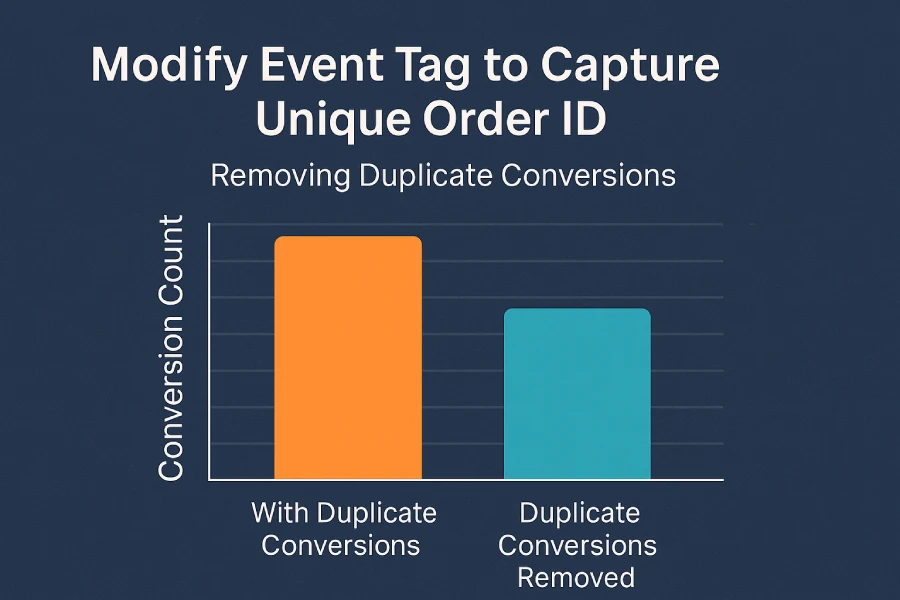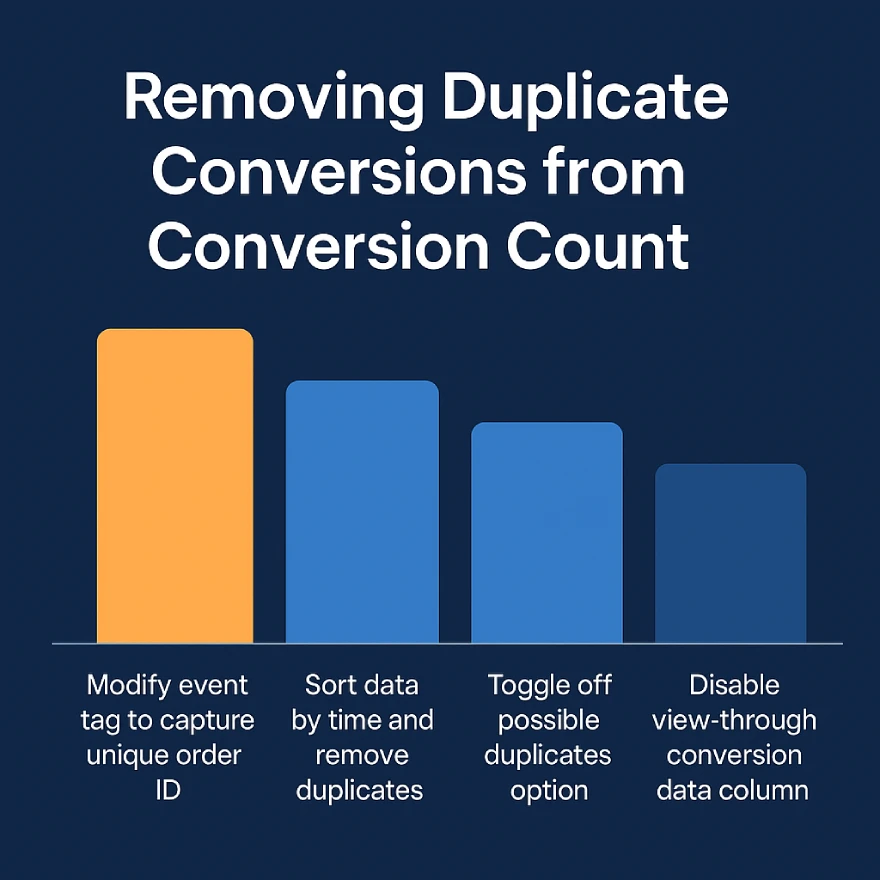You will wonder how easily you can pass the Google Ads Measurement Certification. In this post, I will cover a real question from the exam, provide a full explanation with examples, and show you why the correct answer works—plus, break down why the wrong ones fail.
If you follow this entire guide carefully, you’ll not only pick the right answer on test day, but truly understand the underlying concept. In the conclusion, I’ll also give you the official Google sources this question is based on.
So, no delay—let’s get to the main point.
Question and Correct Answer
A marketer added a conversion tracking tag to a landing page on their company’s website. When analyzing purchasing data, they found duplicate conversions. How can the marketer remove duplicate conversions from their conversion count?
- They can modify the event tag to capture a unique order ID.
- They can sort the data by time and remove duplicate times found on entries.
- They can toggle off the possible duplicates option at the top of the chart.
- They can disable the view-through conversion data column.
Here is the correct answer: ✅ A) Modify the event tag to capture a unique order ID.
Why Is “Modify Event Tag with Unique Order ID” the Right Answer?

In digital advertising, tracking conversions accurately is crucial. But what happens when the confirmation page reloads, or a user refreshes their browser? If your tracking tag is not uniquely identifying each transaction, Google Ads may count that same action twice.
This is where the unique order ID comes in.
By modifying your event tag to capture a dynamic, transaction-specific value—like order_id=TXN789432—you tell Google Ads:
“This transaction already occurred. Don’t count it again.”
When the same order ID shows up multiple times, Google Ads automatically filters duplicates, ensuring only the first instance is counted. This keeps your reporting accurate and prevents inflated conversion numbers.
🔑 Key takeaway:
Unique order IDs act as filters. Without them, Google thinks every page load is a new conversion.
Why the Other Answer Choices Are Wrong
Let’s break down why the other three answers sound reasonable but are completely off-track:
B) Sort data by time and remove duplicates manually
This doesn’t solve the problem at the source. It’s like fixing a leak by mopping the floor—you’re only addressing the symptom, not the cause. Google Ads still logs the duplicate conversions; you’re just reviewing them manually afterward.
C) Toggle off “possible duplicates”
This option is fictional. There is no such toggle in Google Ads. It’s a distractor created to confuse exam takers. Google Ads does not allow you to turn off duplicate detection from a UI setting.
D) Disable the view-through conversions column
View-through conversions track users who see an ad but don’t click and still end up converting. Turning this off changes what is visible in your report—it has zero effect on how actual conversions are tracked or duplicated.
Real-World Example: How a Unique Order ID Saved a Campaign
Imagine Maria runs a digital ad campaign for her online store selling art prints. She sets up Google Ads conversion tracking to monitor sales.
One day, she notices her conversion data shows double the actual number of purchases. Confused, she checks her site and sees that customers often refresh the thank-you page after buying.
The problem? Her conversion tag fires on every page load, but it doesn’t include any unique identifier.
🔧 Her fix:
Maria adds a unique order_id field to her tracking setup. Now, when a purchase is completed, the tag includes a value like order_id=45721. If the page reloads, Google Ads sees the same ID again—and doesn’t count it twice.
This one tweak improves data accuracy, optimizes Smart Bidding, and ensures she only pays for real conversions.
Quick Comparison
Let’s summarize the four choices and see what really works:
| Option | Prevents Duplicate Conversions? | Explanation |
|---|---|---|
| ✅ Modify event tag with order ID | Yes | Adds a unique value that stops repeat counting |
| ❌ Sort data by time | No | Only helps with manual review, not tracking logic |
| ❌ Toggle off duplicates option | No | This feature doesn’t exist in Google Ads |
| ❌ Disable view-through conversions | No | Unrelated to duplicate conversion tracking |

Source Links from Google
These official Google Ads support pages confirm and explain this solution in detail:
- Track Unique Transactions – Google Ads Help
- Avoid Duplicate Conversions with Transaction IDs
- Set Up Google Ads Conversion Tracking
Make sure you review these before your certification exam for extra clarity.
FAQs
Q1: What exactly is a unique order ID?
A unique string or number added to the conversion tag that identifies each transaction individually—usually generated by your checkout system.
Q2: Do duplicate conversions affect Smart Bidding?
Yes. If Google Ads thinks you’re getting more conversions than you actually are, it may raise your bids unnecessarily, wasting your budget.
Q3: Where do I insert the order ID?
You can do this directly in your conversion tracking code, or pass it through a data layer if you’re using Google Tag Manager.
Q4: Can I use this method for leads or sign-ups?
Absolutely. Any time there’s a risk of duplicate tracking, adding a unique identifier (like a form submission ID) can improve accuracy.
Conclusion
Let’s recap.
✅ Problem: Duplicate conversions due to users reloading the confirmation page.
✅ Solution: Add a unique order ID to the conversion tracking tag.
✅ Result: Google Ads filters out repeat events and only logs real conversions.
This isn’t just exam advice—it’s real-world knowledge that helps you run smarter, more efficient ad campaigns. If you’re studying for the Google Ads Measurement Certification, you now fully understand one of its key questions.
✔ Learn the logic.
✔ Apply the fix.
✔ Pass the exam.
Finally, I can say that if you are ready, you can take the exam on Skillshop – Google Ads Measurement Certification. If you want more real exam questions and answers like this one, which have already been covered, follow along. I’ll be breaking down more Google Ads Measurement Certification exam questions with full solutions in the next posts on Google Ads!
